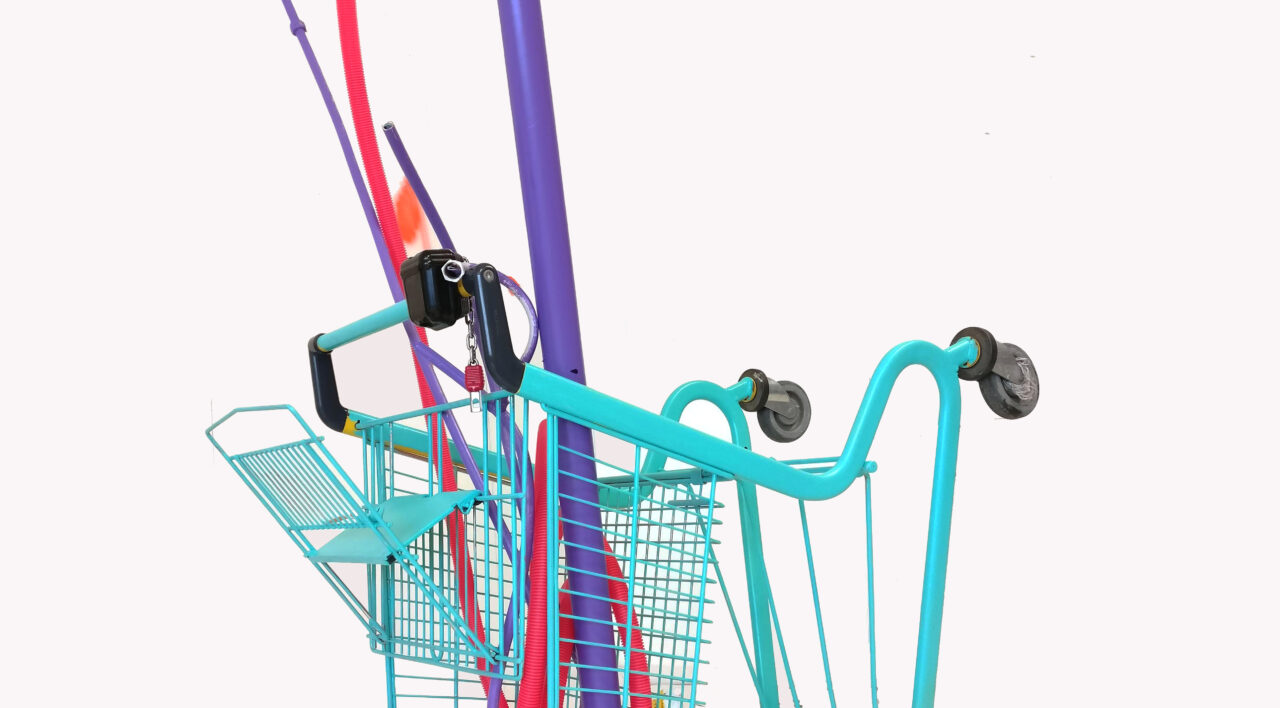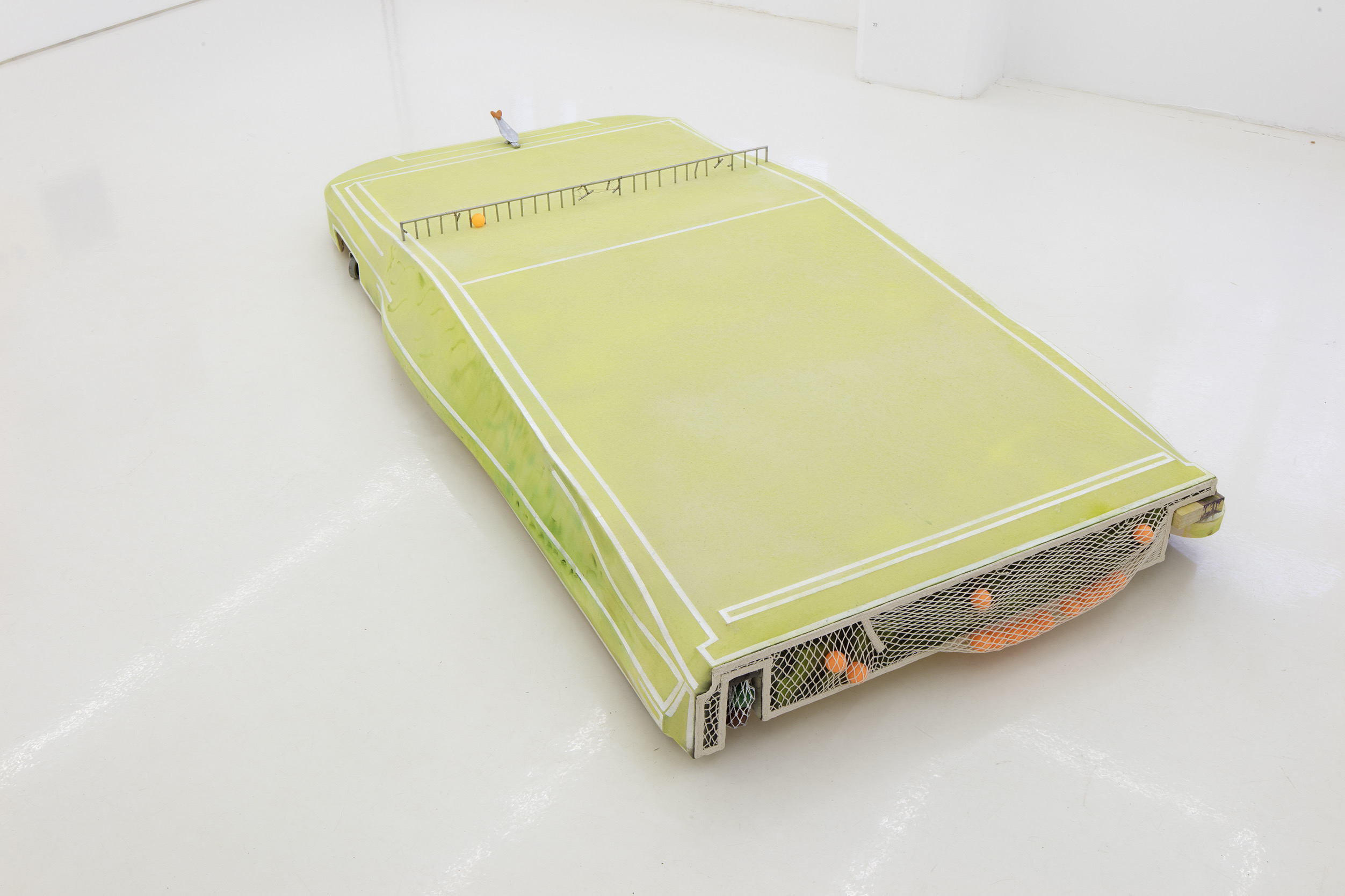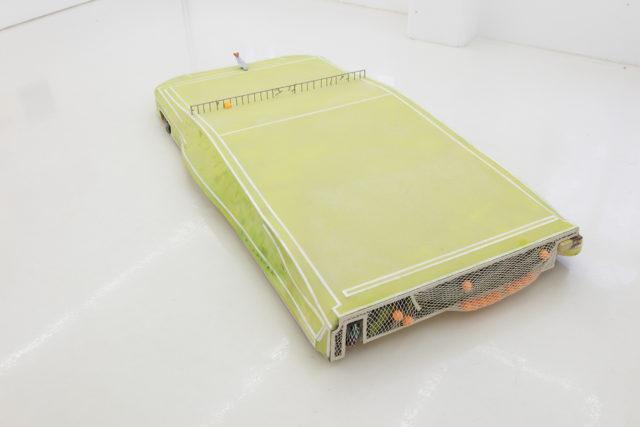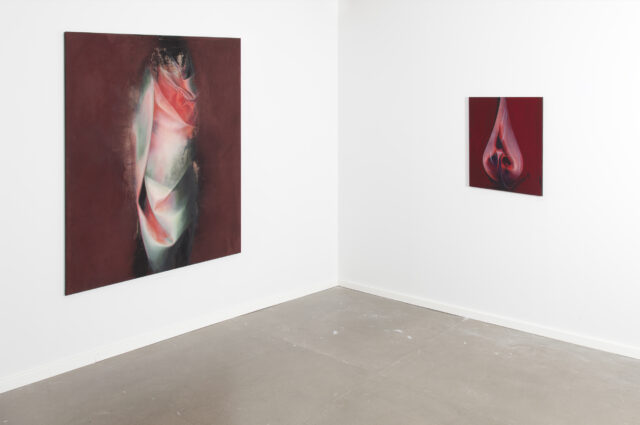Notes on the fun of space and place in the paintings of Elina Autio, Kaija Hinkula, and Lasse Juuti
For the last two and a half years, I have more or less actively thought about humour in the paintings of Elina Autio, Kaija Hinkula, and Lasse Juuti. The artistic practices of the three Finnish painters have never really left my mind; whenever I think about contemporary painting, I remember the joyous strategies with which Autio, Hinkula, and Juuti approach the inevitable problems of working in the field called painting. For me, paintings, or painterly objects-in-space, by Autio, Hinkula, and Juuti articulate a nonchalant yet earnest relation to the sometimes-insurmountable history of (especially western) painting.
The three artists dealt with here seem to represent an important set of routes as an answer to an argument posed by many critics and theoreticians (following Eugène Delacroix), namely that what has already been said about painting is not enough. This assertion points to the fact that even though so much has been said and written about painting within art history and theory, it still seems that there are problems or questions – both theoretical and technical – about painting as a medium in an unsolved state.
These three painters work with different concepts and ideas, yet elements of humour connect their work. Their work is often also characterised in writing as “funny” or “witty”. That is also where my eagerness toward Autio, Hinkula, and Juuti spans from. What is their relation to painting, and why – not forgetting how – is this relation funny?
Different materials, different discourses
Walking in a gallery space, one encounters a setting that reminds of a post-storm view. A turquoise shopping cart on its nose; banana peel and face mask thrown around and landed on a purple canvas; even a fire hose in a messy pile. Spending a summer day in the architecturally interesting Meri-Rastila, one notices two colourful anomalies in the somewhat grey surroundings: round-shaped canvases filling two formal openings on the façade of an apartment building. “This is painting” is hardly the first note one makes.
Kaija Hinkula is an artist who comments serious, formalist questions about painting with holistic fun from beginning to end: sometimes the most serious questions can best be addressed with humour. Her work is characterised by the usage of ready-made objects, a plastic finish, and site-specificity, amongst others. Her work plays with the idea that painting has to, in one way or another, behave like a painting to be considered as such. Hinkula’s exhibitions and installations, such as the ones described above in Forum Box (2021) and Pori Biennale (2022), take up many strategies from language. The work is motivated by discursive intentions rather than focusing on things such as surfaces or even paint.
Hinkula’s work has often been characterised as being in and defined by the ‘expanded field’ of painting – for example, as something moving between painting and sculpture. Not disagreeing with this, I would go further and highlight the painterly components and propose that Hinkula’s practice moves medium-specifically in the field of painting. She does this first and foremost through the act of deconstructing the traditional elements of painting and presenting them in new, context-sensitive ways – be it public intervention or site-specific installation. Her work always seems to offer a whole idea rather than exhibiting specific or small details. It is not to say that what we see in her works is random; on the contrary: the assemblages are carefully constructed. The painterly praxis of Hinkula presents new possibilities to react to painting as a moving, happy medium. When one places her work in the field of painting, and the everyday mess gets mixed with careful constructions of discourse, the reaction is like the best of jokes – taking its time but ending up with a deep laugh.

If one thinks about paintings where the setting is flipped – where laughter precedes contemplation – the work of Lasse Juuti comes quickly to mind. Juuti’s paintings have been gradually coming off the wall only to end up back on it again – or even becoming the wall itself, as in his installation at Mänttä Art Festival (2022). In his practice, Juuti uses contradictory and indefinite objects and large forms and shapes to activate the viewer, both bodily and intellectually, in this order. There is an exhilarating sensation of childlike awe when one is in the space with Juuti’s work. Finding familiar objects or realising that something actually belongs to the work itself is part of a language of painting that builds primarily on the materiality of the components. For example, the ready-made objects used – takeaway coffee cups (a recurring theme) or table tennis balls – gather new meanings for their context is so radically altered.
At first, it seems his paintings have an unclear nature, but by building his own world through the lack of sharp clarity, Juuti operates via a unique and self-sustaining language. Juuti’s paintings look as if they are made by hand without too much attention to minimal details, thus actively joking about the manly tradition of big paintings in an exhibition space. Still, there is not a lack of colour or experimentation of shape. There is a character of fooling or gaming in the work. That is visible in many of Juuti’s paintings, for example, in Collector’s Green (2021), a large painting depicting a distorted tennis field or pool table, sports associated with a certain grandeur. The work, presented in Helsinki Contemporary in 2021, reacts to both the gallery and the exhibition’s viewers in a harmless, laughable way. Collector’s Green aptly shows how Juuti works with materials in a way where the painted canvas is always present but always shaped anew, associated and connected with something that can’t quite be put into language. Like Hinkula, Juuti’s work also has a discursiveness to it. It builds on a tension between the materiality of canvas and paint – always moving towards the conceptualisation of painting but never reaching, or even trying to reach, it.
If Hinkula’s humour relies on discourse and Juuti’s on materiality, Elina Autio is an artist whose work is located somewhere in the middle. An interplay of colour, form – mainly by modified and shaped stretchers – and ways of mounting, Autio’s work activates the viewer to think about what a painting is and how it can be defined. Through minor, subtle gestures, Autio turns the accustomed viewing situation into a new position and builds restrictedly on the moment of watching. For the last few years, Autio has worked with traditional qualities of presenting painting; when the work – the singular painting – is not hung on the wall, it usually rests against it. She has also repeatedly researched the use of colour and angular shape of painting, as in the works seen in Kunsthalle Helsinki (2019) or tm·gallery (2021). In both exhibitions mentioned, a gesture of transition was present, from one architectural space to another, from inside to outside.
Autio moves in the field of historical painterly narratives, commenting abstraction and colour theories. In her earlier work, such as Pipework (2013), seen in the exhibition Elements (2015) at the Museum of Contemporary Art Kiasma, a reference to building infrastructures is also present, as in the later work, but in a more concrete way. The mentioned work consists of spray-painted cardboard-made ventilation pipes, provoking the viewer to pose questions about the placement of these components in buildings and architectural environments. The transitional nature of the work is present in the movement between a building and the idea of a building. Besides this, the work also has a suspending quality, encouraging the viewer to stop and look.
Autio can be seen as organising a play where the viewer needs to actively move from looking at the painting in a traditional manner to examining the materials and connecting all of this to the surroundings – both the actual space and the space of painting as a medium.
Endnote: painting is free
Looking at Finnish painting of the 21st century, one notices that the boundaries of painting have become counter-restrictive. So much about painting has already been said that a space of freedom has made itself apparent. This is exactly where Autio, Hinkula, and Juuti work – by moving actively between questions about painting as a medium and a space of having fun. The argument seems blunt at first but in the sphere of contemporary painting it appears radical: the painting itself seems free. The humorous nature in the work is essentially connected to the medium of painting through the implementation of ironic, affective, and colourful strategies.




